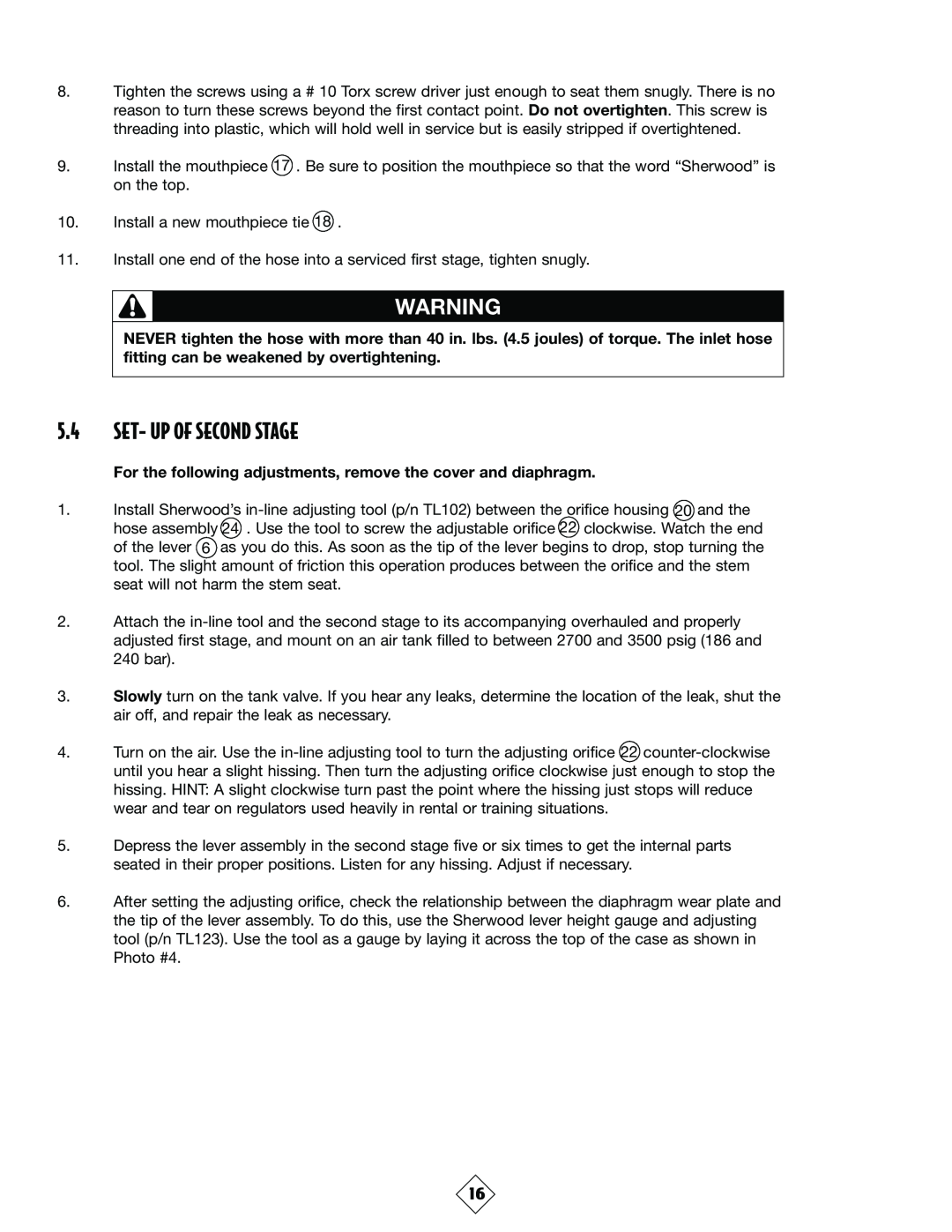
8.Tighten the screws using a # 10 Torx screw driver just enough to seat them snugly. There is no reason to turn these screws beyond the first contact point. Do not overtighten. This screw is threading into plastic, which will hold well in service but is easily stripped if overtightened.
9.Install the mouthpiece 17 . Be sure to position the mouthpiece so that the word “Sherwood” is on the top.
10.Install a new mouthpiece tie 18 .
11.Install one end of the hose into a serviced first stage, tighten snugly.
WARNING
NEVER tighten the hose with more than 40 in. lbs. (4.5 joules) of torque. The inlet hose fitting can be weakened by overtightening.
5.4SET- UP OF SECOND STAGE
For the following adjustments, remove the cover and diaphragm.
1.Install Sherwood’s
2.Attach the
3.Slowly turn on the tank valve. If you hear any leaks, determine the location of the leak, shut the air off, and repair the leak as necessary.
4.Turn on the air. Use the
5.Depress the lever assembly in the second stage five or six times to get the internal parts seated in their proper positions. Listen for any hissing. Adjust if necessary.
6.After setting the adjusting orifice, check the relationship between the diaphragm wear plate and the tip of the lever assembly. To do this, use the Sherwood lever height gauge and adjusting tool (p/n TL123). Use the tool as a gauge by laying it across the top of the case as shown in Photo #4.
16
